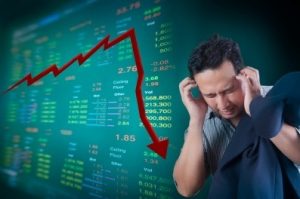Trading psychology refers to the various aspects of a person’s character, mental state, and behaviors that influence their trading actions.
Recognizing Trading Psychology
Trading psychology examines the emotional aspects of a trader’s decision-making process to determine a trade’s success or failure. It focuses on two distinct subjects – the trader and the market – to analyze the behavior of financial markets in relation to the traders’ instincts, emotions, knowledge, experience, skills, and thoughts.
Trading psychology, understandably, varies from trader to trader because it is influenced by the trader’s emotions, biases, and other varying factors. Fear and greed are often regarded as the two emotions most likely to influence the success or failure of a trade, but hope and regret also play important roles.
Greed is defined as an excessive desire for profits to the point where it clouds a trader’s rationality and judgment, leading to decisions that appear to be too risky.
A greed-driven trade may include purchasing stocks in companies with a poor reputation simply because they are on the rise, or purchasing shares in a company without fully understanding the investment.
As a result, greed can cause a trader to stay in a position far longer than necessary and against their better judgment in order to extract every cent from the trade. This frequently occurs at the end of a bull market when traders attempt to profit from market movements by taking on risky and speculative positions.
Fear, on the other hand, causes traders to avoid risks, resulting in lower returns on their investments. Fear causes traders to act irrationally when it comes to exiting a trade, causing them to go short prematurely or avoid taking on risky positions out of fear of losing money. This type of fear-based emotional trading is common during bear markets, where we can see significant selloffs from panic selling.
Learning about trading psychology can help traders become more aware of their emotions, allowing them to handle the market and their trading positions more effectively during volatile market conditions.
Explaining Behavioral Finance
Behavioral finance studies investors’ cognitive, emotional, cultural, and social behavior and how it affects financial markets.
Learning about behavioral finance is an important part of the journey for finance professionals and serious traders because understanding the psychology, economics, and other social sciences that drive people to make certain financial decisions can help craft a more effective trading plan and build better portfolios.
According to Investopedia, there are five fundamental concepts that comprise behavioral finance:
Mental Accounting – This refers to people’s proclivity to set money aside for specific purposes.
Herd Behavior – This refers to people’s proclivity to mimic the financial behaviors of the majority of the herd. In the stock market, herding is known as the cause of dramatic price movements.
Emotional Gap – This term refers to decision-making that is influenced by extreme emotions or emotional strains. These emotions are frequently the source of people’s inability to make rational decisions.
Anchoring – This is the tendency of people to associate a certain level of spending with a specific reference.
Self-Attribution – This is the tendency to make decisions based on an overestimation of one’s own knowledge or skill.
Emotional Trading: How to Avoid It
One of the primary goals of studying trading psychology and behavioral finance is to gain a better understanding of how the market works and of one’s financial decisions in response to market movement in order to avoid emotional trading.
Emotional trading, as the name implies, is the act of trading that is motivated by strong emotions rather than rational thought and sound reasoning. It occurs when a trader or investor allows their personal emotions and feelings to influence their decision-making.
A trader or investor who understands trading psychology and behavioral finance can effectively navigate volatile financial markets while controlling their behavioral impulses of emotional buying and selling that can result from following the market’s ups and downs.
Emotions can’t be avoided, but taking a step back and examining them can be a valuable tool, along with good investment practices like goal setting and target setting, risk management through diversification, hedging, and proper money management.


























